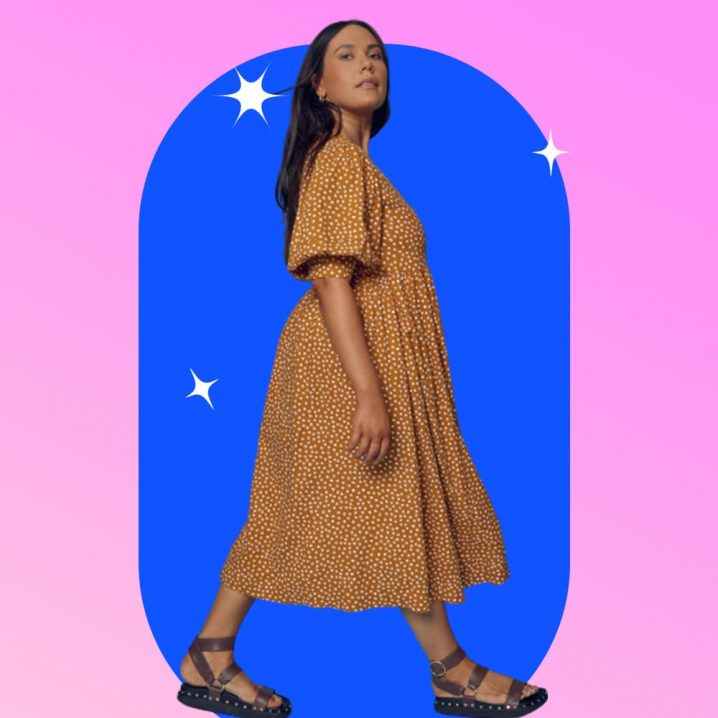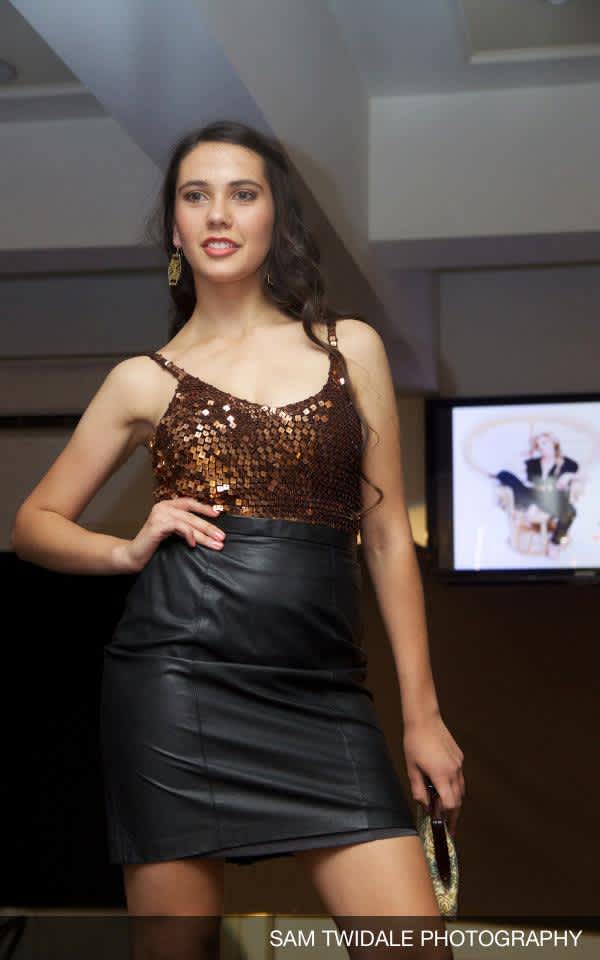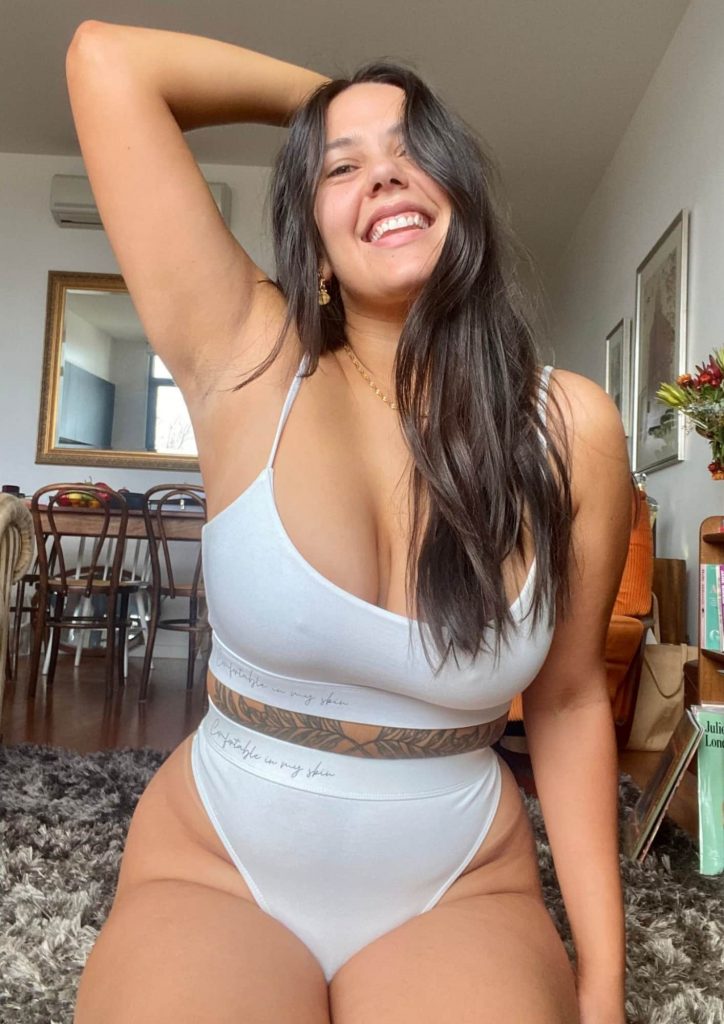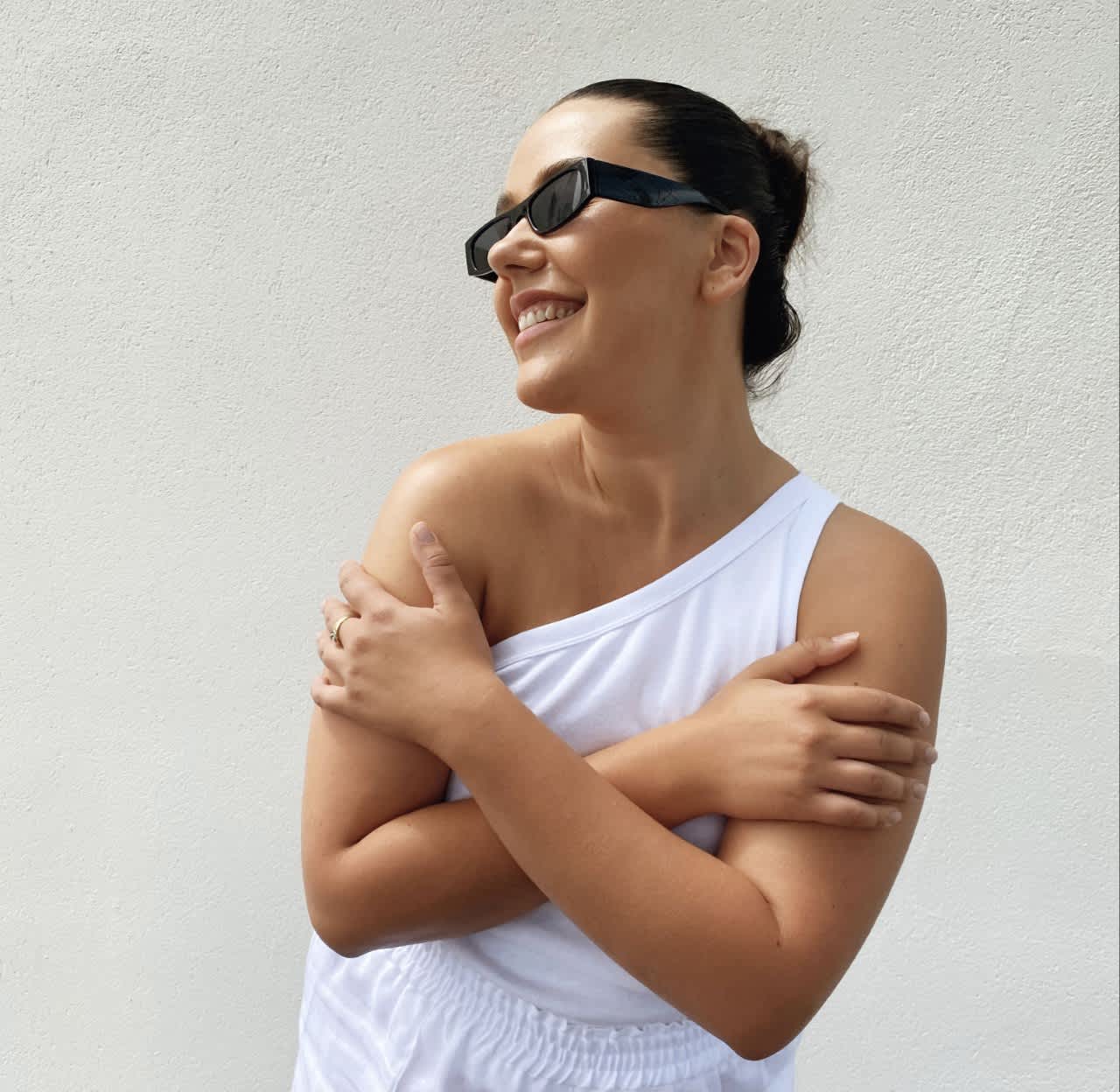
- POPSUGAR Australia
- Fashion
- I Left Modelling As an Unhappy Teen and Came Back Three Sizes Bigger and Thriving
I Left Modelling As an Unhappy Teen and Came Back Three Sizes Bigger and Thriving

POPSUGAR Australia is dedicating the month of September to featuring the next generation of inspired thinkers and courageous individuals who are building and manifesting a brighter future — because the next gen is unstoppable. We will deliver personal essays from young Australians who are making a name for themselves, as well as inspiring thought pieces and interviews with rising talent across different industries throughout the month. Find all of our pieces here, and if there’s someone you think is missing, email our editor so we can share their story — [email protected].
Growing up, I always loved reading fashion magazines. Through them, I discovered a connection to fashion that so many of us feel. It was a form of creative expression and much-needed escapism.
I feel like such a classic creative when I tell my childhood story of growing up in a small place and needing to break free, but it’s the truth. I grew up in a place that made me feel claustrophobic and where I struggled to maintain individuality in my social life. So I turned to my own creative imagination in fashion.
Most weekends, I’d study fashion magazines, cut out the pictures I liked and stick them into a scrapbook full of outfit inspiration. Then, I’d walk down to my second home — Vinnie’s — and look for things that resembled elements of fashion that had inspired me and use secondhand pieces to create my own looks.

I learnt from a young age that the things we choose to put on our body hold so much power. They not only impact the way we feel, but also represent what we want to convey to the outside world. These moments of inspiration and self-directed creativity got me through some of my hardest moments.
I found fashion intoxicating, and I wanted more than just to satisfy myself with my own creative style. The stories that high-end fashion campaigns tell are from a world that exists outside the ordinary, and I desperately wanted to be a part of that.
But even though the magic of fashion draws us in, if we can’t see a representation of ourselves within it, it also has the power to make us feel invisible and unworthy.
When I began working in the fashion industry, I was an awkward 14-year-old. I was a size eight, already at my full height of 5″9 and even then, one of the first things my agent told me was that I’d have to lose weight “eventually”. It was over before it had even begun.

I’d been indulging in fashion media throughout childhood (the mid-90s) and was so used to seeing extremely skinny girls representing designers I loved that the idea of needing to be skinnier seemed somewhat inevitable, so I didn’t argue with her.
Truth be told, I’d never thought about why all female bodies in fashion looked the same. Back then, I just thought that slim bodies were the official definition of beauty and all I wanted was to be a part of that, so I was prepared to do the “work”.
And that I did. I worked as a model throughout most of my teenage years. Sadly, it was a pretty damaging experience for me. From the get-go, I didn’t have what the industry deemed at the time to be the ‘right’ body, and there wasn’t much I could do about it.

Although I got quite a bit of work, I was constantly under pressure to be smaller, which was something I felt I didn’t have control over unless I just didn’t eat.
Existing as I did, with my natural body, didn’t feel like an option in the fashion industry at the time. People would always give off this “it’s not ideal but we’ll make it work” attitude with me, which made me feel pretty worthless.
Thinking back, it’s insane to think how I was being treated at the size and age I was. I was fourteen, way before I’d started developing and much too young to be told that I needed to look different to how I did. My mental health suffered. I hated looking at myself in the mirror. I stopped enjoying food. And I became constantly critical of myself in every facet of my life.
But there was such a huge part of me that was invested in fashion. The dreams you have as a child are really powerful and difficult to let go of. I had such a love for fashion and this world I’d created in my head that the idea of not doing it seemed way worse than putting up with the pain that I was in, both physically and emotionally.

It’s tough for me to remember because I barely recognise the person I was back then. How I felt about myself in those early stages of my modelling career, I could never imagine feeling now.
Eventually, I had to quit. My mum was worried about how thin I was getting and how tired I looked. Leaving was a tough decision. It was heart breaking. But as soon as I walked out of my first modelling agency for the last time, I felt relieved.
I couldn’t hack going to work every day with people that made me feel as though there was nothing I could do to succeed unless I changed the unchangeable: my body shape.
They told me I’d never work again. That if I let myself go, no one would want to sign me. That I should be grateful to them for giving me a chance.
I never thought I’d return to modelling. Those few years had really changed my perception of fashion and what it meant to me. I never lost the love for it (you can always dress yourself up without a camera in your face), but it didn’t seem like this magical untouchable world to me anymore. It was a world I didn’t want to be a part of. And that feeling lasted for a long time.
Then, when I turned eighteen, like so many women, my body completely changed. I went from being a long-limbed giraffe to a curvaceous woman. The women in my family are known for their curves, so it was always going to happen. I got myself some juicy boobs and an actual booty, my face filled out, my hair thickened and I truly came into my own womanly form.
I tried to resist it for a while, by wearing baggy clothes or squeezing into old pairs of jeans. But that didn’t last for long. Eventually, I grew to accept my body for the beauty that it holds regardless of size. And thankfully, I found that the more I lent into it, the more attractive I felt.
It was as though this new body had given me a new identity and a new perspective on self-worth. I was so afraid of my body changing for so long that when it changed and I liked what I saw, I felt this overwhelming sense of relief. What I’d dreaded — gaining weight and changing shape — turned out to be a blessing. My new body made me feel more beautiful, not less, and I finally recognised that it didn’t matter what I looked like to other people, but how I felt about myself.
Fast forward to six years later. I’m 24, living in Melbourne and pursuing creative pursuits I thought would take me a lifetime to be doing. I feel independent, I love my body, I celebrate my own reflection and pride myself on being body positive. I felt ready to enter the fashion industry once more.
Last year, in the midst of our first ever COVID-19 lockdown, I signed with Chadwick Models. I’m now a size 14-16 and I feel the most beautiful I’ve ever felt. They signed me straight away. They didn’t tell me I’d need to lose weight or change my look. They just got some stills taken for my portfolio, took my measurements and asked me about my hours. And that was that.

I believe I was one of the first curve/plus-sized models they’d ever signed. Following the success of pioneers like Ashley Graham and Paloma Elsesser, I’ve been starting to see more and more plus-sized girls in Australian campaigns. The Australian fashion industry is slowly starting to open itself up to size diversity. It felt incredible to be at the pinnacle of that change.

Now, one year on, I’m a working model. I’m working more than I ever did in my teen years and the environments are so much better. Although I’m still often surrounded by professionals who have been in the industry for decades and are stuck in their old-school mentalities, for the most part, I’m treated just like any other model.

We’re still figuring it out in Australia. Designers are learning to design for different body shapes. Creative directors are learning that the poses that look good on skinny models don’t look the same on curvy models. And everyone is learning the inclusive language that is imperative when celebrating diversity.

It feels surreal to be working more than ever in the fashion industry. Given my past experiences, it’s kind of ironic. It’s been a massive learning experience for me that the things you are taught to fear — like your body changing shape and becoming less desirable — are the things that will actually bring you the most success and happiness.
Overall, it’s taught me to follow my gut. When I was thin and starving myself, I was depressed and anxious. I knew that wasn’t sustainable and it also just didn’t feel right.
You know when you feel beautiful and honestly, that feeling is totally up to you. It’s hard to control those thoughts and feelings, being brought up to think that you need to look a certain way to be attractive.

But if you can unlearn those restrictions thrust upon us by a patriarchal society, you’ll experience the freedom of feeling comfortable in your own skin. Which, I think, is when we’re at our most beautiful.


